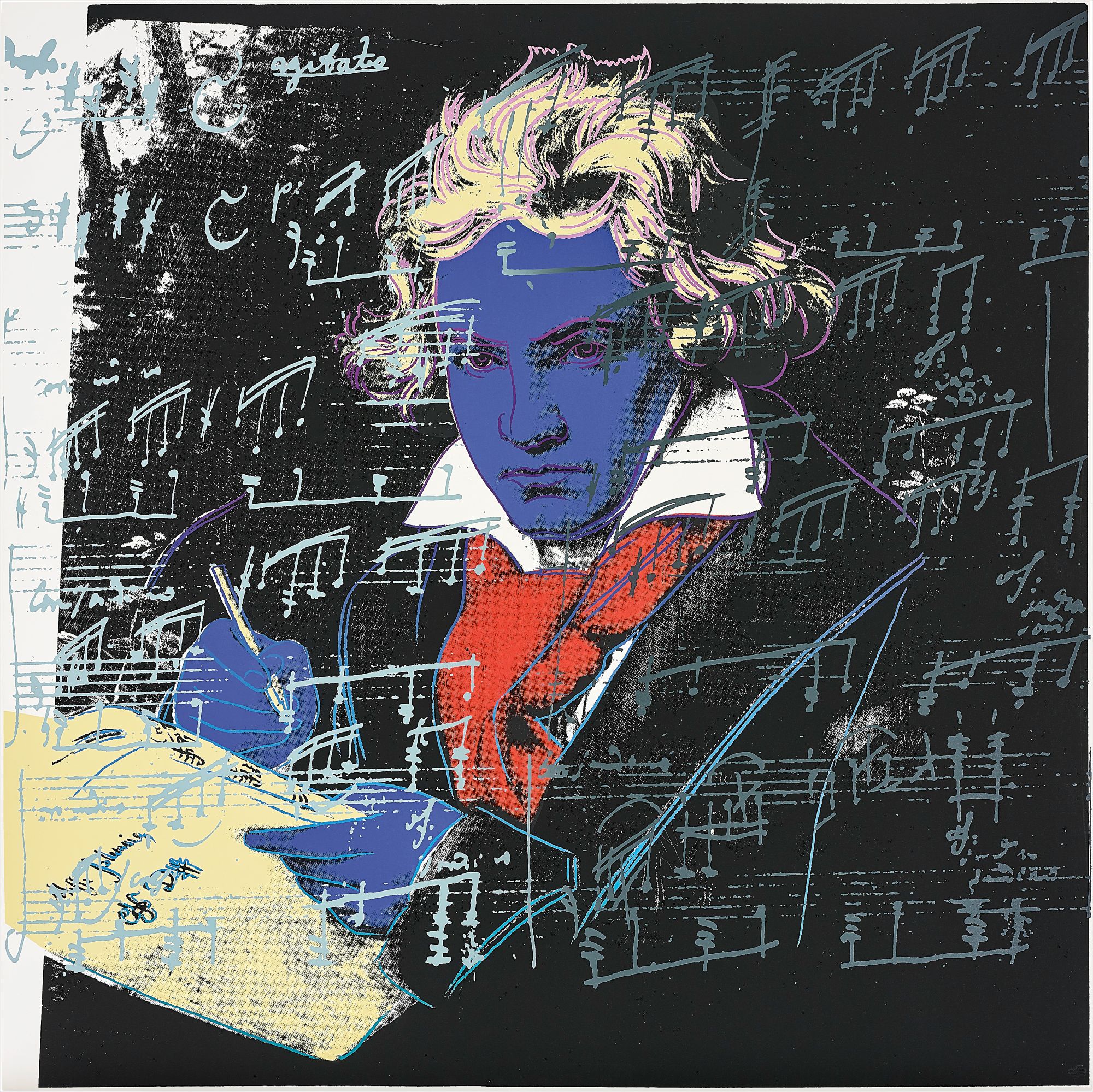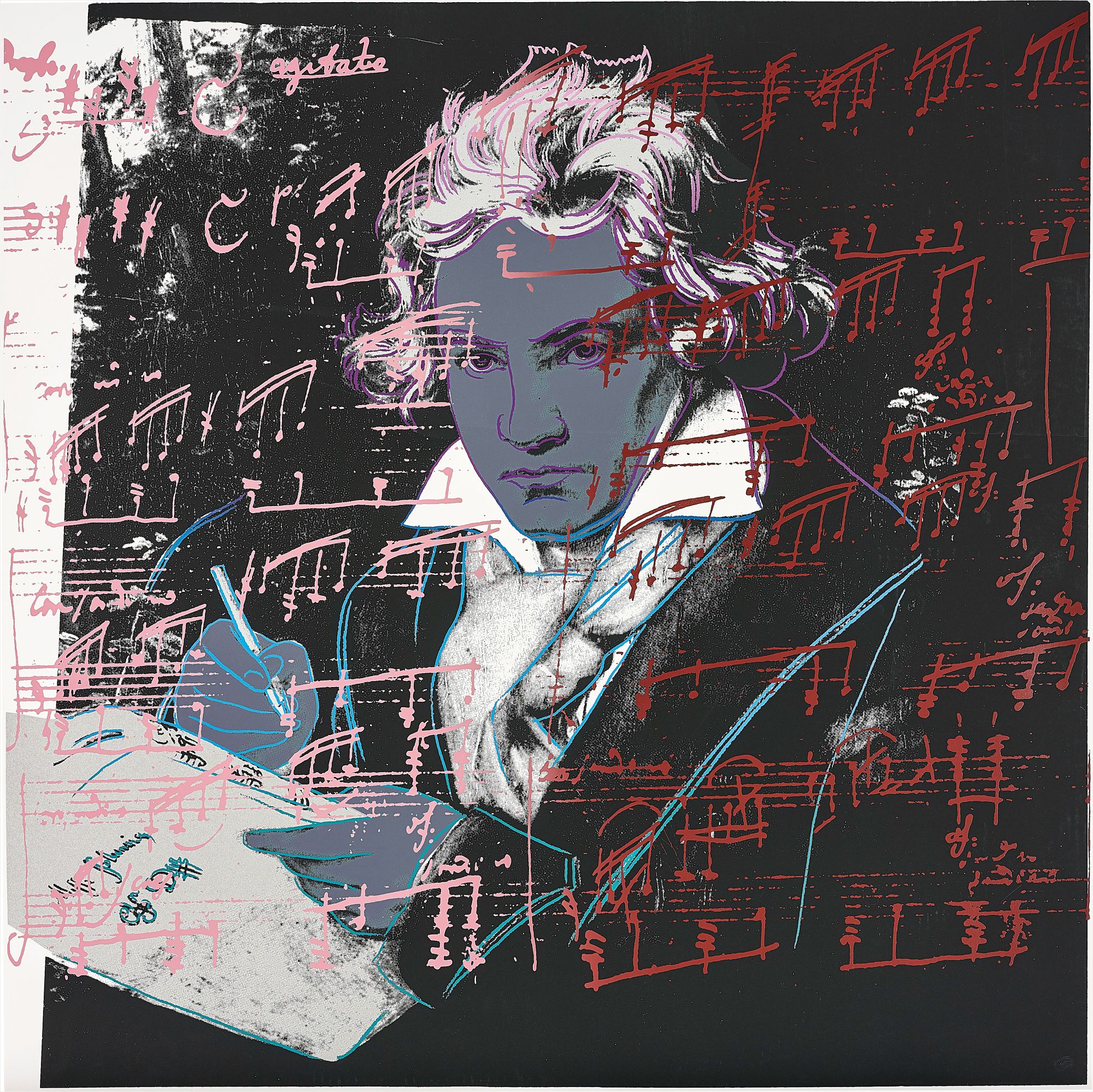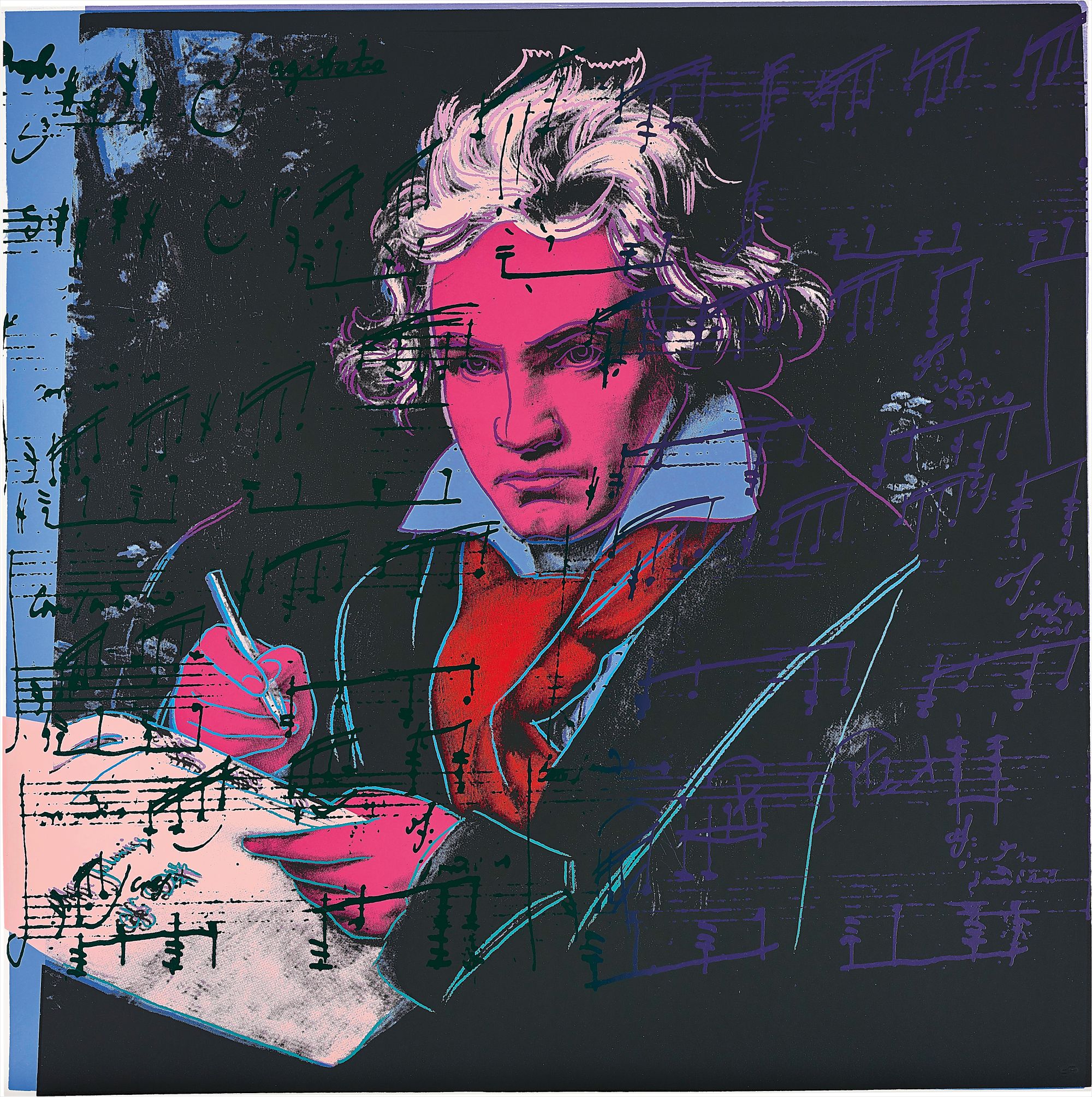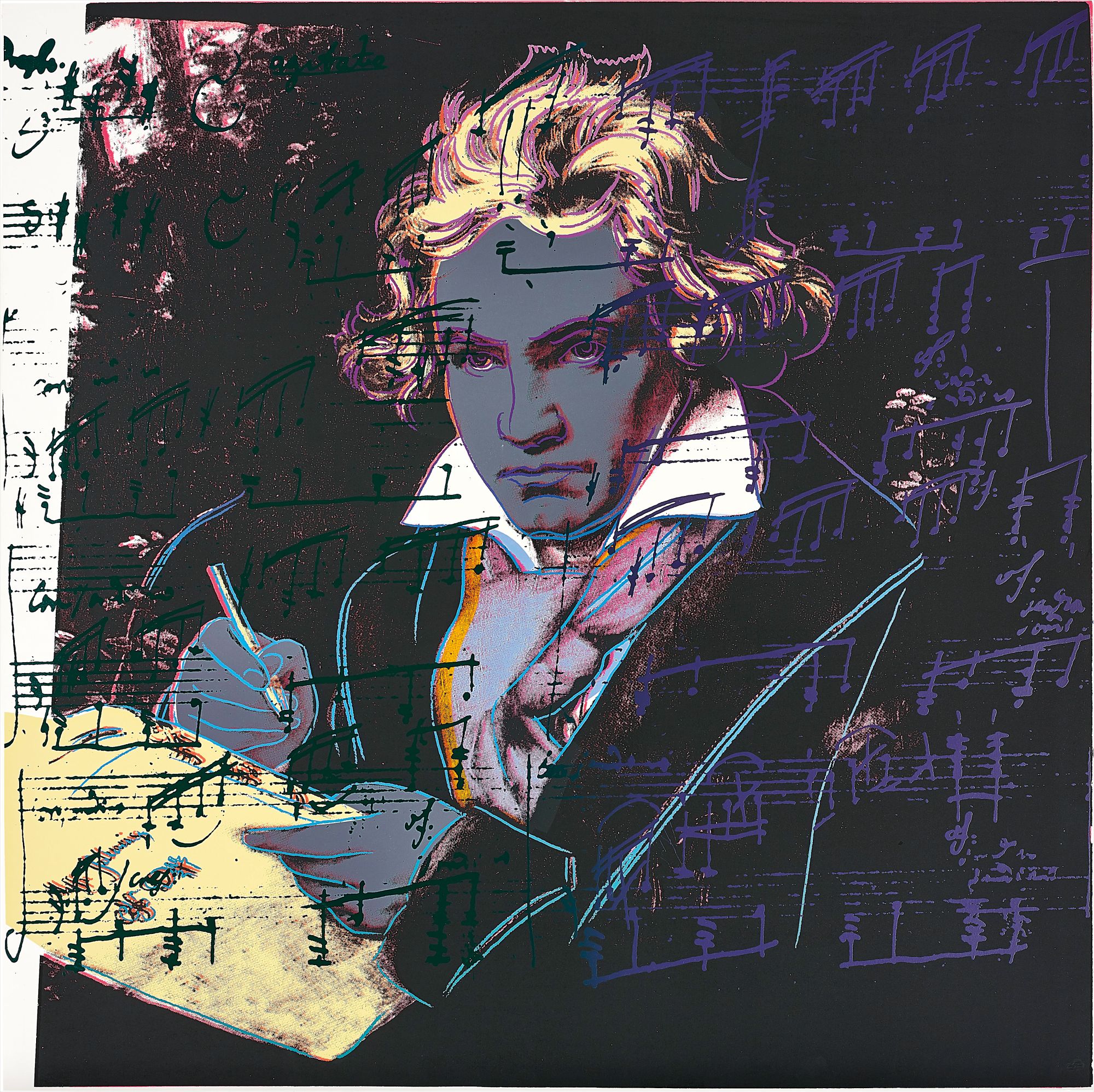









39
Andy Warhol
Beethoven
Full-Cataloguing
Warhol’s goal was to create icons beyond mere representation, as he understood that in order to create an enduring image, he had to reduce and condense a person’s likeness to an instantly recognisable motif. His screenprinted portraits transcended the sitters’ biography and character, skirting the line of caricature to become more symbol than representation.
Created in 1987, shortly before his death, Warhol’s quartet of portraits of Ludwig van Beethoven (1770-1827) perfectly demonstrates the artist’s ability to manipulate and appropriate imagery to create a visual icon. For this set of screenprints, Andy Warhol took an already famous image of the German composer: an idealised and heroic portrait painted in 1820 by Joseph Karl Stieler (1781-1858), which has coloured our view of Beethoven’s personality and appearance unlike any other.
Long familiar through commercial overexposure, Stieler’s depiction of the composer’s leonine mane and impatient scowl are the visual tropes that Warhol emphasised through the use of colour. The alternate hot and cool tones of the composer’s face and cravat emerging from darkness heighten the intensity of Beethoven’s fixed gaze - keeping our attention closely on his visage, whilst simultaneously echoing the dramatic changes in volume and pace that Beethoven was so well-known for.
However, Warhol pushes Stieler’s visual identifiers of the composer one step further, beyond mere facial recognition. Not content with simply using the tools of Beethoven’s trade, the manuscript and pen, to allude to the composer’s talent, Warhol instead marches the music directly across the portrait itself. In Stieler’s painting, Beethoven holds the score for his late Missa solemnis (1819-1824). Finished three years before the composer’s death and often considered one of his greatest works, the Missa solemnis was nonetheless surpassed in popularity by the music that Warhol chose to identify the composer with: his Piano Sonata No. 14 in C# Minor, better (and more romantically) known as the Moonlight Sonata.
Composed in 1801, the year that Beethoven first realised he was losing his hearing, the Moonlight Sonata took on a life beyond Beethoven’s intentions. Thought to have been inspired by the composer’s love for his 17-year old pupil, the Countess Giulietta Guicciardi (although more likely to have been composed as a funeral hymn) the Moonlight Sonata received its nickname from Berlin critic, Ludwig Rellstab, who in 1832 described the famous first movement as like “a boat passing the wild scenery of Lake Lucerne in the moonlight”. Although it wasn’t known by this evocative moniker until shortly after the composer’s death, the sonata was hugely popular from the moment it was written, exasperating Beethoven, who remarked to fellow composer, Carl Czerny, “Surely I’ve written better things.”
In choosing the Moonlight Sonata to best identify Beethoven, Warhol reveals his insistent concern with representing not the true likeness, intentions or character of his sitters, but the condensed, most recognisable elements of their legend. In his quadruple portrait, Beethoven the man has been effaced to a certain extent, underneath the notes of his most famous composition, under the myth of his own celebrity.
Andy Warhol
American | B. 1928 D. 1987Andy Warhol was the leading exponent of the Pop Art movement in the U.S. in the 1960s. Following an early career as a commercial illustrator, Warhol achieved fame with his revolutionary series of silkscreened prints and paintings of familiar objects, such as Campbell's soup tins, and celebrities, such as Marilyn Monroe. Obsessed with popular culture, celebrity and advertising, Warhol created his slick, seemingly mass-produced images of everyday subject matter from his famed Factory studio in New York City. His use of mechanical methods of reproduction, notably the commercial technique of silk screening, wholly revolutionized art-making.
Working as an artist, but also director and producer, Warhol produced a number of avant-garde films in addition to managing the experimental rock band The Velvet Underground and founding Interview magazine. A central figure in the New York art scene until his untimely death in 1987, Warhol was notably also a mentor to such artists as Keith Haring and Jean-Michel Basquiat.